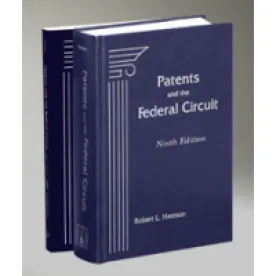Salesforce.com, Inc. v. Virtualagility, Inc. and U.S. Bancorp v. Solutrain, Inc.
In a pair of covered business method (CBM) decisions, the U.S. Patent and Trademark Office Patent Trial and Appeal Board (PTAB or Board) illustrated what types of business-method patents are directed to patent-eligible subject matter and which are not. The PTAB has now determined that a patent directed toward managing a collaborative activity was not patent-eligible because it did not require a specialized computer, and could instead be implemented on any generic computer. Salesforce.com, Inc. v. Virtualagility, Inc., Case No. CBM2013-00024 (PTAB, Sept. 16, 2014) (Braden, APJ). In contrast, the PTAB determined that the basic, core concept of a patent for processing paper checks was directed to patent-eligible subject matter. U.S. Bancorp v. Solutran, Inc., Case No. CBM2014-00076 (PTAB, Aug. 7, 2014) (Bunting, APJ).
Both of these PTAB decisions applied the recent Supreme Court opinion in Alice that tightened up the test for subject matter eligibility. Under Alice, the first step in a § 101 analysis to determine whether the patent falls into one of the three categories of patent-ineligible subject matter: “laws of nature, physical phenomena, and abstract ideas.” Both the Salesforce and Bancorp decisions focused on the “abstract idea” category. If the patent falls within one of the three categories, the second step is to identify an “inventive concept,” an element or combination of elements that directs the patent toward more than just the abstract idea itself. In both Salesforceand U.S. Bancorp, the PTAB applied the two-step Alice test, but arrived at opposite conclusions.
In Salesforce the PTAB explained it will not accept (as patent-eligible) patent claims directed to an abstract business idea implemented on “a generic computer [that] perform[s] generic computer functions.” The challenged patent claims were directed toward managing a collaborative activity by using a computer database filled with various types of data related to a company—such as customer information and economic data—so that a user could sort the information to show how best to allocate company resources.
Applying the first Alice step, the PTAB determined that the Salesforce patent was directed toward an abstract idea: “[t]he creation and use of models to aid in processing management information” was a “disembodied concept” not tied to a specialized computer and was therefore just an abstract idea. The patent failed the second part of the Alice analysis for a similar reason. The PTAB determined that a generic computer was not an “inventive concept” that would narrow the claims to cover less than the abstract idea. Although the patent owner argued that its invention required “a specialized computer that is programmed to execute a series of steps,” the PTAB explained that a conventional, generic computer could perform the patent’s steps.
In contrast, in U.S. Bancorp, the PTAB determined that even if some steps of a business-method patent are directed toward abstract ideas, the proper is focused on the “basic, core concept” of the challenged patent and claims directed toward a physical invention are subject matter-eligible. The petitioner's mistake was arguing for subject matter ineligibility based on discrete parts of the patent claims, instead of focusing on the invention as a whole.
The challenged patent was directed toward a system and method for processing paper checks, using check data to promptly make a deposit into a merchant’s account and then creating a check image to match with the check data. U.S. Bancorp argued that none of the limitations were directed toward any technological improvement in scanning, and none of the other limitations were anything other than abstract ideas. The PTAB, however, determined that the “basic, core concept” of the patent was a method of processing paper checks. On the spectrum of “abstract ideas,” which are not patent eligible, and “technological processes,” which are, the PTAB found the invention was closer to a technological process and was therefore directed toward patent-eligible subject matter. Notwithstanding that certain discrete claim limitations were directed toward fundamental economic practices, it remained the case that the concept of receiving and depositing paper checks was a physical, and therefore patent-eligible, invention. As the Board explained, it is a patent’s claims’ basic, core concept that must be found patent-eligible, not each claim element. Here, the PTAB determined that § 101 subject matter eligibility was not an appropriate ground on which to institute a covered business method patent review.




 />i
/>i

